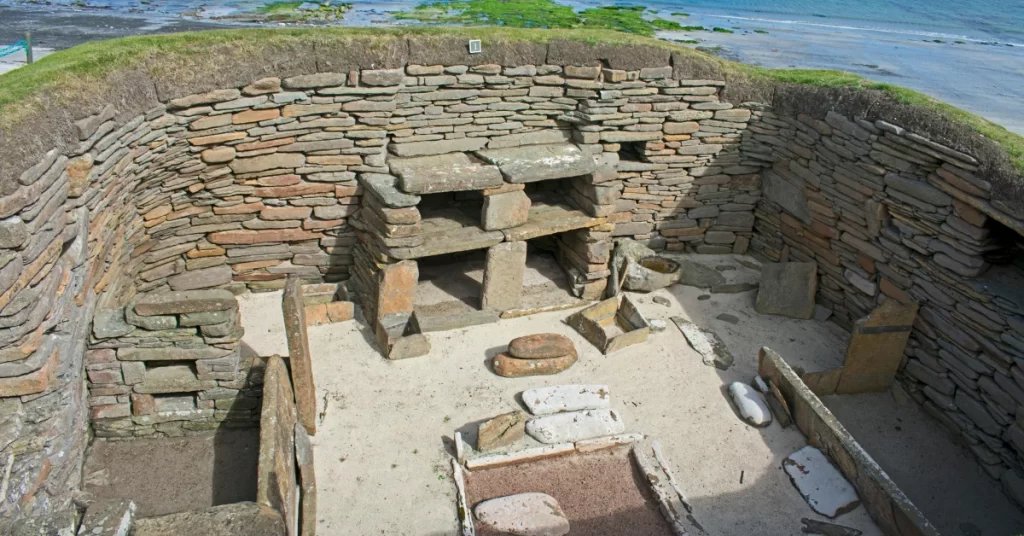During a winter storm in the 1850s, in the Orkney Islands off the north coast of Scotland, there lies a hidden settlement long preserved in time. A village that was inhabited long before the Great Pyramids of Egypt and the Stonehenge were built. With prehistoric structures dating from 5,000 years ago, Skara Brae, also known as the “Scottish Pompeii”, shows how Scottish ancestors used to live and survive.
The Skara Brae was a neolithic village that was lived in by an estimate of around 100 people, with the houses connected to each other through a tunnel system. These people were able to survive by mainly keeping cows, sheeps, and pigs, with these animals being their main source of food. They were able to grow some crops and gather natural resources from nearby areas. These neolithic people were also known to catch various fish, cod, and haddock in the nearby sea and hunt wild animals, such as deer.
Yet, what surprises archaeologists when they excavated the site in the 1970s is how well it was preserved. Nowhere else in northern Europe were we able to witness architectural evidence of how these ancestors lived.

Photo Credit: Wikimedia Commons
The houses in the village were built with flat stone slabs built into the ground and are organized around what seems to be a central street, linked in covered passages. A door, which can be locked from the inside, gives access to the well adorned structures. The ceiling is also made out of skins stretched over driftwood and buried under a thick layer of sod. Each house consists of a single room with stone furniture such as dressers, beds, and seats dressed inside. Found inside these dressers were prized objects such as bone, hand tools, gaming dice, and an assortment of jewelry. Items included richly carved stone objects, with which archaeologists believed were religious items that aided in rituals. Also inside were pottery that stored an assortment of resources and food and tanks that were suspected to store fish bait. No weapons were found in the houses, which suggested that Skara Brae lived a peaceful life.
There are theories as to why the settlement was left abandoned and under the sand. Some say that the people of Skara Brae were swept by a massive storm, which killed the people who lived here and buried them in sand and sea. A more generally accepted theory was that the settlement experienced colder and wetter climates over time, forcing the people who lived here to move to other areas, which eventually led to the preserved settlement we know today.
Hence, Skara Brae was proved to be the best preserved Neolithic village in northern Europe, with the site given official recognition in 1999 as part of the World Heritage List.
There are many things we don’t know about this neolithic village. You can visit the well-preserved Skara Brae in Orkney, Scotland to experience this prehistoric village. The visitor centre provides touch-screen presentations and interesting quizzes on the settlement’s history, and a look into artifacts during the various excavations. There is also a replica house that allows visitors to explore its interior, from the stone beds to dressers.
A cafe and gift shop is also situated here selling local souvenirs for you to take home!



























































